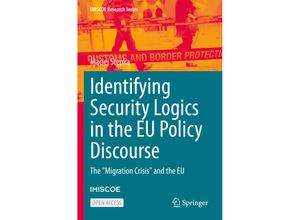This open access book investigates the complexity and the modalities of securitization of
migration and border control at the EU level. It discusses and compares how different EU
institutions and agencies have been deploying different logics of security e.g.
humanitarianism or management of risk while framing increased migratory flows and so called
migration crisis as a security problem. The book argues that the (re)development of EU
migration and border control policies in response to increased migratory flows of 2015 have
revealed an increasingly tangled nature of securitization of migration in the EU. This is
reflected in the intertwining of security logics where migrants and human mobility tend to be
securitized through different sometimes multiple interpretative lenses at different stages of
policy framing. From a theoretical point of view the book develops a fresh analytical
perspective that further contributes to burgeoning discussion on securitization theory. By
bridging the literature on policy framing and securitization it makes a significant
contribution to the debates on both securitization and migration. As such this book is of great
interest to students academics policy makers and all those working in the fields of EU
politics migration security and international relations.



